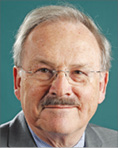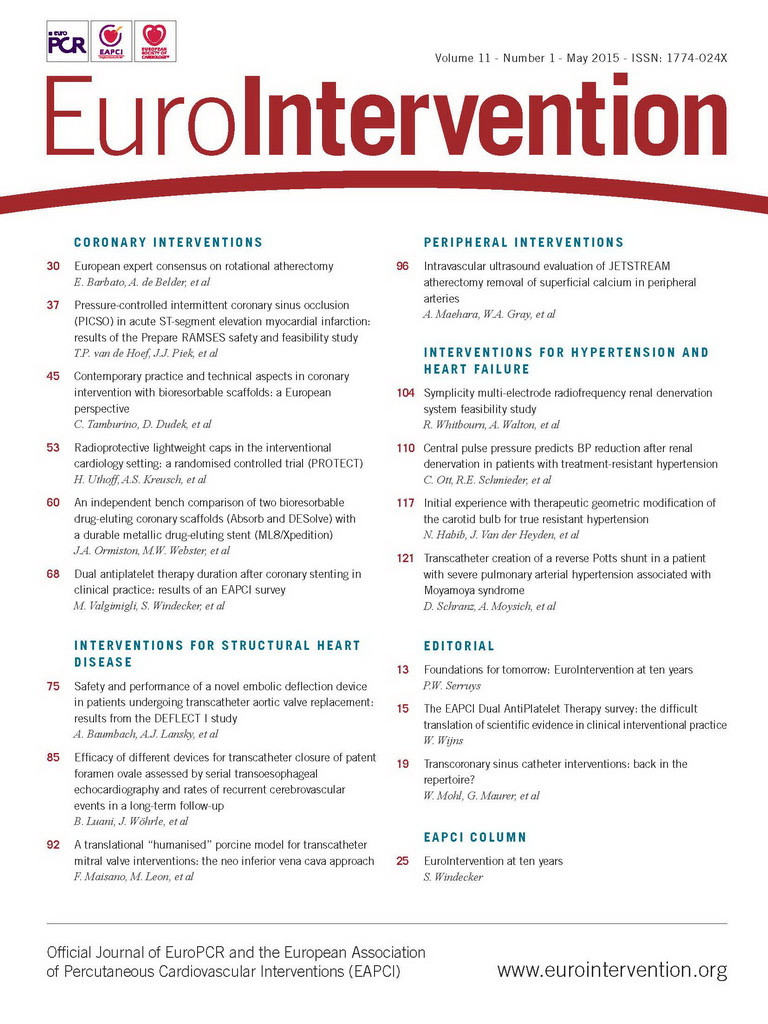
The roots of EuroIntervention run deep and were well captured 10 years ago in our opening editorial1. The birth of the journal took place one morning during a EuroPCR board meeting in the Jean-Jacques Rousseau room of Le Meridien Etoile Hotel in Paris. The discussion quickly became highly animated and strong opinions were expressed as the most senior participants recognised their impending ageing process, coupled with the profound concern that all the scientific and educational messages regularly conveyed to the interventional audience would soon be lost if they were not written down and impressed on paper.
Several concepts emerged during this meeting. Firstly, we needed to go beyond the merging of our two courses, PCR and EuroCVS into EuroPCR, and think seriously about the next generation of interventionalists and the continuation of the activities we were then engaged in over the long term. Secondly, reflections on this first point led us to a growing interest in what was then a magic word, “association”. When we analysed what was necessary to create a professional association within the European Society of Cardiology (ESC), we realised that there were three essential components: a congress, a working group of members/fellows associated with that congress and, finally, a dedicated journal. With these three components in hand, we could create an association which could act as an overall assurance for our long-term goals.
On the very day when I received the responsibility – which I very much desired – to lead EuroIntervention, I began working. Initially, the concern was to find four to six papers to publish in each of the first issues. I personally approached many colleagues to send in good papers as a friendly gesture to get us on our way and, if you look back at these first issues, the quality is amazing for such a novice journal. To set a good example, our team in Erasmus, Rotterdam offered up high quality papers, which normally could easily have been published elsewhere. Slowly we progressed, first with four issues a year, then six, eight and ten, finally arriving at 12 print issues. And today, if you take into consideration the increase in “ahead of print” publications, you could easily argue that we publish almost the equivalent of these 12 print issues online! Ten years on from our inception we are now preparing to take the next jump into a deeper, more multimedia environment, with more e-publications expected.
Reflecting on these milestones, I would say that the first Impact Factor was a truly inspiring moment – to come from nowhere to almost 4! In publication formats, a number of these “special” types of publication stand out, such as the creation of the very successful “Expedited Editorial Publications” (EEP) sent to over 60,000 people on our mailing list. Another novelty is the “How should I treat?” format, something which was also adopted by PCR as a popular oral session during the meeting and later imitated at other international meetings. I am particularly proud of the “Tools and Techniques” series, since it was our so-called juniors who created it, and it is they who have continued to maintain this fascinating and practical series over the years. T&T, as it is called, also became one of the essential steps in preparing the PCR-EAPCI Textbook. Of course, being the official journal of the association we successfully created, the EAPCI, we continually promote it’s important work through such mediums as the EAPCI President’s column, interviews with the National Working Groups and of course the publication of the EAPCI consensus documents. I am also very proud of the various supplements that we have produced under the direction of our marvellous and expert Guest Editors. This year, we have also seen the successful start of a sister journal – AsiaIntervention – using the same Europa Digital and Publishing team.
At each stage in its evolution, a journal faces challenges. These are natural and help keep us vital and truly responsive to our public. Today, EuroIntervention is approaching a crossroad in its journey, one which poses many questions. As editors, we are faced with fundamental questions concerning maintaining and also improving even more the quality of content juxtaposed with the constraints of modern publishing. As recent years have shown, the growing multiplication of mediums both traditional and digital have added an extra complexity to this equation. To answer these questions in a competitive but financially restrictive environment will require creative solutions. Today a robust and solid strategy is just as critical a component in our goal of longevity as the journal’s content, and we must take into consideration any suggestions in order to build solidly upon our success.
As we said above, challenges inspire creativity! You will notice that we have marked this 10th anniversary with an act of renewal – our totally revamped front cover. Putting myself in the place of the reader, I wanted my first glance at the journal to be that of the content, seeing directly the title as well as the first and senior authors. You will also notice the new gatefold, which offers more information and a lower paper weight for the print edition. I look forward to your reaction to what I think is a handy tool for reading and, as I myself am an iPad junkie, I invite you also to download the newly redesigned EuroIntervention iPad app. Android followers do not dismay – this version is also on its way.
That often used PCR phrase, “together we achieve more”, has been our credo throughout the last 10 years. Together as submitters, as reviewers and as editorial support team members we have realised our goals. Today, I invite you all to join us in laying the foundations for tomorrow.
Reference

